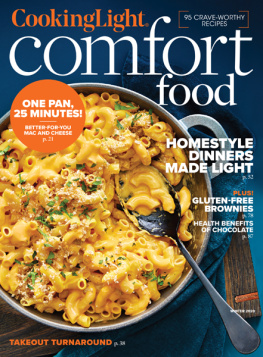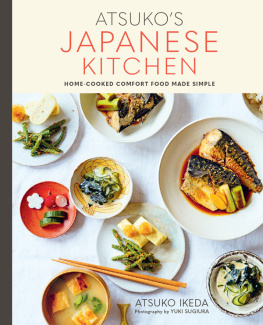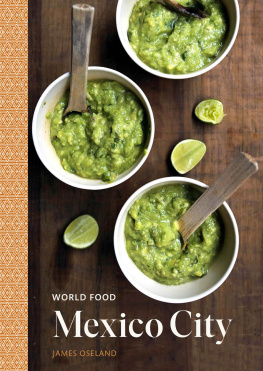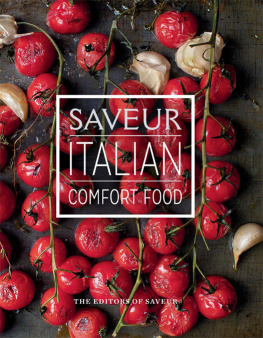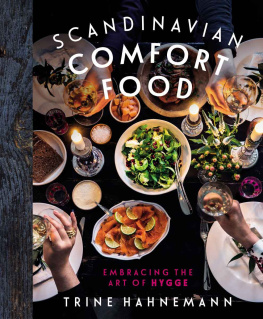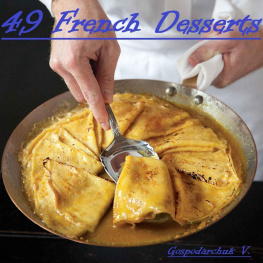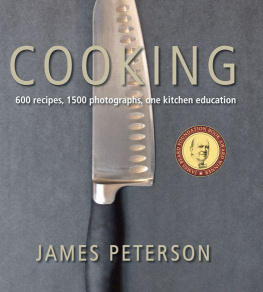James Oseland (editor) - Saveur: The New Comfort Food, Home Cooking from Around the World
Here you can read online James Oseland (editor) - Saveur: The New Comfort Food, Home Cooking from Around the World full text of the book (entire story) in english for free. Download pdf and epub, get meaning, cover and reviews about this ebook. year: 2011, publisher: Chronicle Books, genre: Home and family. Description of the work, (preface) as well as reviews are available. Best literature library LitArk.com created for fans of good reading and offers a wide selection of genres:
Romance novel
Science fiction
Adventure
Detective
Science
History
Home and family
Prose
Art
Politics
Computer
Non-fiction
Religion
Business
Children
Humor
Choose a favorite category and find really read worthwhile books. Enjoy immersion in the world of imagination, feel the emotions of the characters or learn something new for yourself, make an fascinating discovery.
- Book:Saveur: The New Comfort Food, Home Cooking from Around the World
- Author:
- Publisher:Chronicle Books
- Genre:
- Year:2011
- Rating:3 / 5
- Favourites:Add to favourites
- Your mark:
- 60
- 1
- 2
- 3
- 4
- 5
Saveur: The New Comfort Food, Home Cooking from Around the World: summary, description and annotation
We offer to read an annotation, description, summary or preface (depends on what the author of the book "Saveur: The New Comfort Food, Home Cooking from Around the World" wrote himself). If you haven't found the necessary information about the book — write in the comments, we will try to find it.
Saveur: The New Comfort Food, Home Cooking from Around the World — read online for free the complete book (whole text) full work
Below is the text of the book, divided by pages. System saving the place of the last page read, allows you to conveniently read the book "Saveur: The New Comfort Food, Home Cooking from Around the World" online for free, without having to search again every time where you left off. Put a bookmark, and you can go to the page where you finished reading at any time.
Font size:
Interval:
Bookmark:

Last night I cooked the perfect meal. There was nothing new or unusual about it, just split pea soup and frise salad, recipes Ive known for years. But the crisp, bitter greens were studded with smoky bacon, and the yolk of a just-poached egg ran luxuriously over the top. The soup, made with leftovers from a ham Id baked the day before, was warming and rich. Together with a hunk of crusty bread, these dishes made me incomparably happy.
Foods like thesecomfort foodswe dont just eat, we hunger for. They are the chicken soup thats been simmering on the stove all afternoon, filling the house with tantalizing aromas. Or the macaroni and cheese, the version with bchamel and Gruyre, that your family and friends beg you to make. You eat them on the fly, standing up at market stalls: shakshuka, eggs poached in a spicy tomato stew, scooped from a curbside pot in Jerusalem; or crisp-fried spring rolls stuffed with pork and rice noodles, gobbled in a busy Bangkok market. They are restaurant classics: the crunchy fried chicken that a neighborhood joint is famous for, or the linguine tossed in white-wine sauce with mussels and shrimp at that Italian-American place we keep going back to. No matter where theyre eaten, comfort foods are the ones weve known and loved forever; the ones we ate as kids and the ones we yearn for as adults. Theyre the foods that taste like home, wherever you happen to be when you eat them.
These are the dishes that weve always celebrated in the pages of saveur magazine: soulful, honest, traditional fare that transcends trend and defines the way people eat all over the globe. Every cuisine has its canon of comfort, the foods that folks crave above all others and the ones they eat day in and day out. Those are the recipes youll find in this book: for good, old American stick-to-your-ribs fare, like Texas chili, Rhode Island stuffed clams, chicken pot pie, and patty melts; and for international dishes like guacamole and French onion soup, whose comfort the world has claimed as its own. There are the great pastas of Italy, like fettuccine Alfredothat irresistible tangle of pasta, butter, and cheeseand homemade tagliatelle egg noodles with slow-simmered, meaty rag bolognese. There are the lusty one-pot meals, like boeuf la bourguignonne, and oven-baked triumphs like potatoes gratindishes that French cooks affectionately call cuisine grand-mre, or grandmas cuisine. All told, this compendium represents some of the best traditional home cooking on the planet.
Theres also something new about this collection of comfort foods. It reflects just how much the category has grown. If youre like meI came of age in postwar California, raised by parents who loved to cookyou might have grown up on a far-reaching diet of foods like tamales, bagels and lox, Chinese spareribs, and, yes, meat loaf. But today, our comfort-food vocabulary is even broader. We have access to it all: fresh lemongrass, Israeli couscous, handmade corn tortillas, dried baccal. We travel more. Americas population continues to become more diverse. And weve learned volumes about the way the world eats.
Hair and makeup artists, working at a fashion show at the Millennium Biltmore Hotel in Los Angeles, break for a lunch of burgers.
Shoppers at the Mercato Orientale, a busy market in the heart of Genoa, Italy.
Diners enjoy peel-andeat boiled shrimp from the Gulf of Mexico.
At SAVEUR, weve always been interested in where these foods come from, and weve trekked to the places where theyre produced. Weve marveled at the producers ingenuity: the gristmills that grind wheat into flour, the aging rooms where cheeses develop their flavors. Weve come to understand the historical and cultural contexts that shape a cuisines character: the trade routes, the agricultural traditions, the ways people obtain their food. Weve learned to use cooking tools like seasoned woks for making Chinese stir-fries and clay tagines for Moroccan stews, and weve embraced techniques for everything from extracting the flavor from lemongrass to evenly slicing carrots.
Most of all, weve come to know and admire the people who acquainted us with these dishes. Some of them are chefs, to be sure, but most are people making a living serving great foodlike Jos and Gloria Fonseca of Los Angeless La Abeja caf, whose huevos rancheros introduced me to the pleasures of Mexican breakfast; and the Mississippi Delta line cook Brandon Hughes, who deep-fries catfish like nobodys business. Theyre home cooks preparing meals for family and friends: people like saveur contributor Alia Yunis, who gave us her Palestinian-Lebanese mothers exemplary recipe for hummus; Aggeliki Bakali, from the Greek village of Pertouli, who taught us how to make hortopita, a savory pie of wild greens wrapped in homemade phyllo dough; and even my dad, Larry, whose method for marinating and grilling flank steak yields a charred, salty crust and a perfectly pink center.
This book is a tribute to those great cooks and to all the valuable lessons weve learned from them over the years. In the sidebars and notes that run alongside the recipes, our editors and contributors share their stories, as well as kitchen wisdom and ingredient information that inspire and empower us as cooks. The dishes these people make is food for the body and soul. We cant help but give ourselves over to it. Thats the beautiful thing about comfort food: no matter where it comes from, it awakens our senses and lifts our spirits. It comforts us again and again.
JAMES OSELAND
A variety of mezedes, or small plates, at Tsinari, an ouzeri in the city of Thessaloniki, in northern Greece.
Every corner of the globe has its favorites: Thai spring rolls, Argentine empanadas, Italian crostini. From the Mediterranean and the Middle East, where snacking on small plates is a way of life, we get hummus drizzled with aromatic olive oil, vegetable-filled savory pies, and grilled bread topped with peak-of-season ingredients like wild mushrooms or sweet, juicy tomatoes. If you ask us, theres no more convivial way to eat than laying out a table full of these flavorful starters and inviting everyone to dive in.
The French cows milk cheese Comt is one of the best melting cheeses we know of. The key to bringing out its mildly sharp, herbaceous flavors is to cook it very slowly in a generous amount of butter over moderate heat, allowing it to relax into a luscious meltin this case between two thick slices of sourdough bread.
4 tbsp. unsalted butter, softened
4 -inch-thick slices sourdough bread
8 oz. Comt cheese, grated
Serves 2
1. Spread the butter evenly on both sides of each slice of bread. Put half the cheese on one slice and half on another. Top each with a remaining bread slice.
2. Heat a 12-inch cast-iron skillet over medium-low heat. Add the sandwiches to the skillet and cook, flipping once with a metal spatula, until golden brown and crusty on both sides, 910 minutes each side. Transfer the sandwiches to a cutting board and slice in half with a knife.
COOKING NOTE While Comt makes the ultimate grilled cheese sandwich, other semifirm cheesesincluding Jarlsberg, fontina, and Gruyremelt beautifully, too.
As much as I loved grilled American cheese sandwiches as a kid, it wasnt until a few years ago that I discovered how transcendent this classic comfort food can taste when its made with truly great cheese. That epiphany came after a visit to the Jura mountains, along the French-Swiss border. There, I was seduced by Comt, a semifirm cheese born of the distinctive milk of local Montbliarde cows, whose diet includes wild orchids, daisies, dandelions, and more than 400 other plant varieties that grow on the green hillsides of the Franche-Comt region. Produced in the fruitires, or cooperative dairies, that have dotted this landscape for centuries, the wheels of cheese are aged on spruce boards for a few weeks before being entrusted to an affineur, or cellar master, who oversees its further maturation. Unlike many AOC cheeses (meaning those from specially designated cheese-making regions), Comt is made with an emphasis not on uniformity but on individuality. A young cheese thats just a few months old may taste and smell like butter, an older one thats been aged for a year or more, like fruit and spices. Over time, the cheese develops hints of chocolate, spice, nutmeg, apricot, hazelnut, and caramel, flavors that become even more prominent, I discovered, once the cheese has melted. Its no wonder that Comt is such a celebrated cooking cheese, used in both France and the United States for everything from fondues to souffls to gratins to my personal favorite, great grilled cheese sandwiches.
Font size:
Interval:
Bookmark:
Similar books «Saveur: The New Comfort Food, Home Cooking from Around the World»
Look at similar books to Saveur: The New Comfort Food, Home Cooking from Around the World. We have selected literature similar in name and meaning in the hope of providing readers with more options to find new, interesting, not yet read works.
Discussion, reviews of the book Saveur: The New Comfort Food, Home Cooking from Around the World and just readers' own opinions. Leave your comments, write what you think about the work, its meaning or the main characters. Specify what exactly you liked and what you didn't like, and why you think so.


